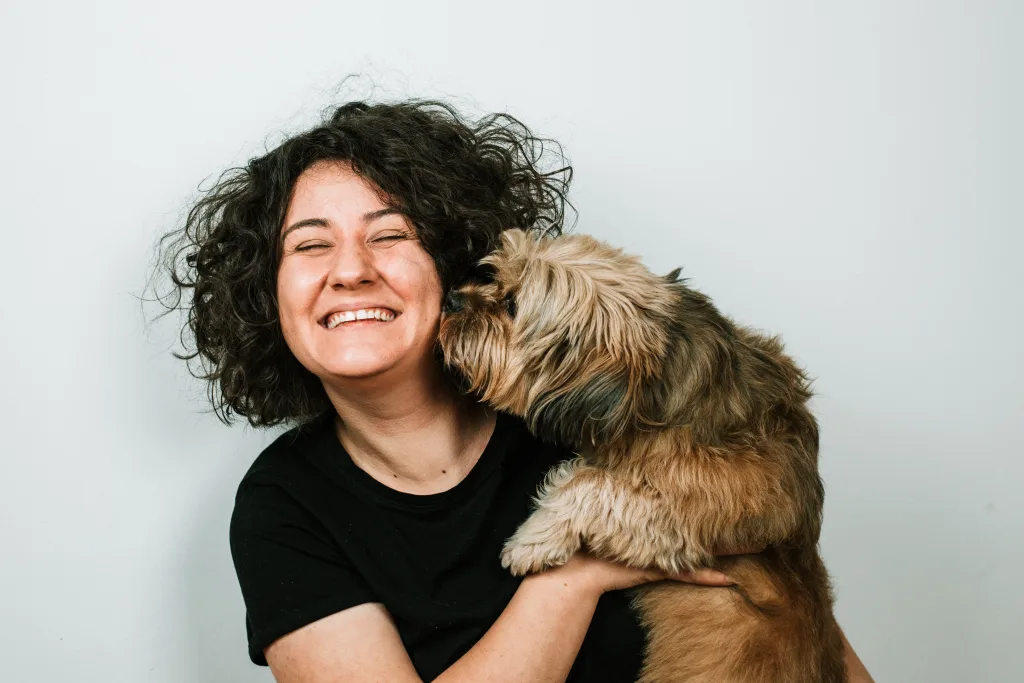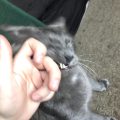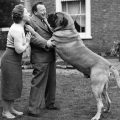Dogs are known for their loyalty and ability to form strong bonds with their human companions. Just like humans, dogs can have a favorite person in their lives. But can dogs change their favorite person? Let’s delve into this intriguing question.
First and foremost, it’s important to understand that dogs form attachments based on a variety of factors. These factors can include their interactions with different individuals, the person’s demeanor, and how well the person meets their basic needs. Dogs are highly perceptive creatures and can pick up on subtle cues and behaviors that make them feel safe and loved.
It’s not uncommon for a dog to have a primary caregiver, someone who spends the most time with them and takes care of their daily needs. This person is often seen as the dog’s favorite, as they have built a strong bond through consistent interactions and care. However, dogs are also capable of forming attachments to multiple people and can have secondary favorites.
So, can dogs change their favorite person? The answer is yes, but it’s not a sudden or random occurrence. Dogs are creatures of habit and routine. If there is a change in their environment or if one person starts spending more time with them, dogs can adapt and form a strong bond with the new person. This can happen gradually over time as the dog’s needs are consistently met by the new caregiver.
It’s important to note that dogs are highly adaptable and can form attachments to new people without completely abandoning their previous favorite person. They have the capacity to love and form strong connections with multiple individuals. Dogs are incredibly loyal creatures and can maintain lifelong bonds with their primary caregiver while also developing new bonds with others.
It’s also worth mentioning that dogs can miss someone who is no longer a part of their daily lives. They may feel a sense of longing or sadness when someone they were previously close to is no longer around. Dogs have a keen sense of emotional connection and can understand the feeling of missing someone.
There are several signs that indicate a dog has formed a strong bond with a person. These signs include giving affection in the form of wet kisses, holding eye contact, bringing gifts or toys to their favorite person, exposing their belly as a sign of trust, sleeping near their favorite person, and displaying happiness and excitement when they are around.
Moreover, dogs may also mirror their favorite person’s behavior. This can include imitating their actions or displaying similar emotions. Dogs are highly attuned to their owners and can pick up on their moods and behaviors, often mirroring them to show their connection.
Dogs are capable of changing their favorite person, but it is not a sudden or random occurrence. Dogs form strong bonds based on consistent interactions, care, and meeting their basic needs. While they may develop new attachments, they can still maintain lifelong bonds with their primary caregiver. Dogs are incredibly loyal and adaptable creatures, capable of loving multiple individuals and displaying signs of affection and connection.

How Do Dogs Pick Their Favorite Person?
Dogs pick their favorite person based on a variety of factors. Here are some key reasons why dogs may choose one person over another:
1. Demeanor: Dogs are observant creatures and can sense a person’s energy and overall demeanor. They are more likely to gravitate towards someone who is calm, patient, and displays a positive attitude.
2. Interactions: Dogs pay close attention to how people interact with them. If a person engages in playtime, grooming, feeding, or other activities that the dog enjoys, they may become their favorite. Consistent positive interactions build trust and create a bond.
3. Basic Needs: Dogs are highly dependent on their humans for their basic needs like food, water, exercise, and affection. If a person consistently meets these needs and provides a stable and nurturing environment, the dog is more likely to develop a strong bond with that person.
4. Training and Socialization: The way a person trains and socializes a dog plays a significant role in their preference. Dogs appreciate clear and consistent training methods, and if a person is responsible for their training and socialization, the dog may feel more connected to them.
5. Time Spent Together: Dogs are social animals and crave companionship. The more time a person spends with their dog, engaging in activities they both enjoy, the stronger the bond will become. Regular walks, play sessions, and quality time together can strengthen the dog’s preference for that person.
6. Positive Associations: Dogs associate people with positive experiences. If a person frequently rewards the dog with treats, praise, or affection, the dog will develop a positive association with that person and may prefer their company.
7. Past Experiences: Dogs have memories, and their past experiences can shape their preferences. If a person has consistently provided love, care, and positive experiences, the dog may develop a strong attachment to them.
It is important to note that while dogs may have a favorite person, they can still form strong bonds with other family members or individuals. Dogs are capable of loving and being loved by multiple people, but their preferences may vary based on the factors mentioned above.
Do Dogs Miss Their Favorite Person?
Dogs do experience a sense of missing their favorite person when that person is no longer around. While dogs may not fully comprehend the concept of human absence or understand why someone is no longer present in their daily lives, they can definitely feel the emotional impact of their absence.
Here are a few key points to consider:
1. Emotional Bond: Dogs form strong emotional bonds with their favorite person, often referred to as their “primary caregiver” or “alpha.” This bond is built on trust, love, and regular interaction. When this person is no longer present, dogs can experience a range of emotions, including sadness and longing.
2. Routine Disruption: Dogs thrive on routine and familiarity. They become accustomed to the presence of their favorite person and the activities they engage in together. When this routine is disrupted, it can cause confusion and anxiety for dogs, leading to a sense of missing their beloved human companion.
3. Behavioral Changes: Dogs may exhibit various behavioral changes when they miss their favorite person. These changes can include increased vocalization (such as barking or howling), decreased appetite, restlessness, searching behaviors (e.g., pacing or sniffing), or even withdrawal from social interactions.
4. Sensing Absence: Dogs have highly developed senses, including a keen sense of smell. They can detect and remember the unique scent of their favorite person, even when they are no longer physically present. This can contribute to their sense of missing someone.
5. Reunion Joy: When dogs are reunited with their favorite person after a period of separation, they often display intense excitement and joy. Their tail wagging, jumping, and overall exuberant behavior are clear indications of their emotional connection and the happiness they experience upon being reunited.
It is important to note that dogs can also form strong emotional bonds with multiple people, such as family members or close friends. While the strength of these bonds may vary, dogs can miss and long for the presence of any significant person in their lives.
While dogs may not understand the full extent of human absence, they do experience the emotional feeling of missing their favorite person. Their behavior and reactions clearly demonstrate their longing for the presence and companionship of those they hold dear.
Why Does My Dog Like Someone Else More Than Me?
There can be several reasons why your dog may seem to prefer someone else over you. It’s important to note that dogs are individuals and their preferences can vary.
1. Time and bonding: Dogs form strong bonds with those who spend more time with them. If another person in the household spends more quality time with the dog, such as playing, training, or going for walks, the dog may naturally develop a stronger bond with that person.
2. Reinforcement and rewards: Dogs are motivated by rewards and positive reinforcement. If the other person consistently rewards the dog with treats, attention, or affection upon their return, the dog may associate that person with positive experiences. This can lead to the dog seeking out their company more often.
3. Personality and compatibility: Dogs, like humans, have their own unique personalities. It’s possible that the other person’s personality or behavior aligns more closely with the dog’s preferences. For example, if the other person is more relaxed and calm, while you are more energetic and active, the dog may feel more comfortable with the former.
4. Training and consistency: Dogs thrive on consistency and clear communication. If the other person is more consistent in their training methods or rules, the dog may feel more secure and confident around them. Inconsistent training or mixed signals can confuse dogs and affect their preference for certain individuals.
5. Past experiences: Dogs have memories, and if they have had positive experiences with the other person in the past, they may naturally gravitate towards them. This could be due to shared activities, such as going to the park, playing games, or simply being present during positive events.
6. Physical attributes or cues: Dogs have a keen sense of smell and may be drawn to certain scents or physical attributes of individuals. If the other person has a particular scent or physical feature that the dog finds appealing or comforting, they may show a preference for that person.
It’s important to remember that dogs are capable of forming strong bonds with multiple people, and their preferences can change over time. Building a strong bond with your dog involves spending quality time together, providing consistent training and care, and understanding their individual needs and preferences.
How Do You Know If Your Dog Is Imprinted On You?
There are several signs that indicate if your dog is imprinted on you, meaning they have formed a strong bond with you. These signs include:
1. Affectionate behavior: If your dog showers you with wet kisses and seeks physical contact with you, it’s a clear sign of their attachment to you.
2. Eye contact: Dogs that are imprinted on their owners often maintain prolonged eye contact. This direct gaze shows trust and a desire to connect with you.
3. Gift-giving: Dogs may bring you toys, socks, or other objects as a way to show their love and loyalty. It’s their instinctual behavior to present you with “gifts.”
4. Belly exposure: When a dog exposes their belly to you, it indicates a deep level of trust and vulnerability. It’s a sign that they feel safe and secure in your presence.
5. Sleeping near you: Dogs who choose to sleep close to their owners, whether it’s on the same bed or nearby, demonstrate a strong bond and a desire to be in your company.
6. Excitement and happiness: A dog imprinted on you will exhibit joy and excitement when you’re around. They may wag their tail vigorously, jump, or bark out of pure happiness.
7. Mirroring behavior: Dogs often mirror their owner’s behavior and emotions. If you’re calm, they’ll be calm. If you’re happy, they’ll be happy. This mirroring is a sign of their deep connection with you.
By observing these signs, you can determine if your dog has imprinted on you and formed a strong emotional bond.
Conclusion
Dogs are incredibly loyal and affectionate animals that form strong bonds with their human companions. They have the ability to imprint on certain individuals, choosing a favorite person based on various factors such as demeanor, interactions, and meeting their needs. Dogs express their love and attachment by giving affection, holding eye contact, bringing gifts, exposing their belly, sleeping near their favorite person, and displaying happiness and excitement around them. They may also mirror their owner’s behavior, further deepening the bond between them. Understanding these signs can help dog owners recognize and appreciate the strong connection they have with their furry friends. Dogs truly are man’s best friend, providing unwavering companionship and love.












